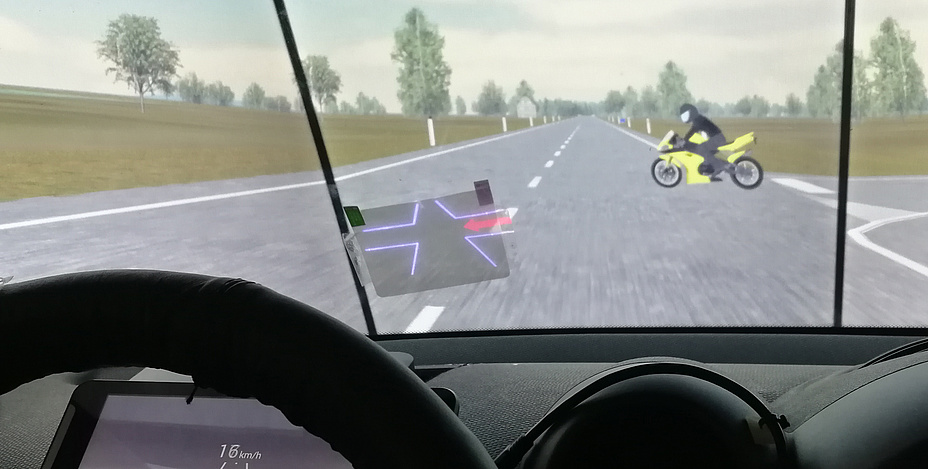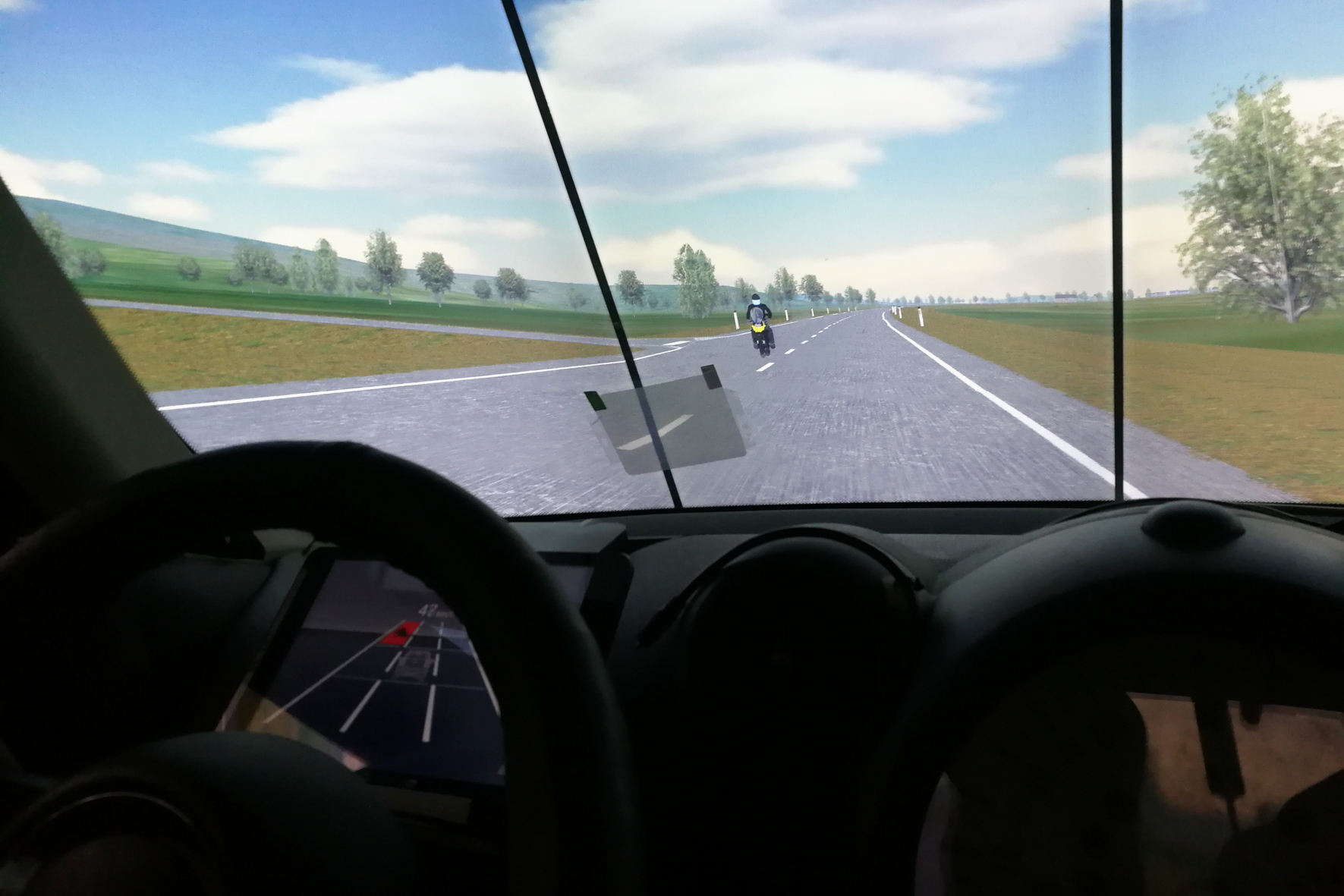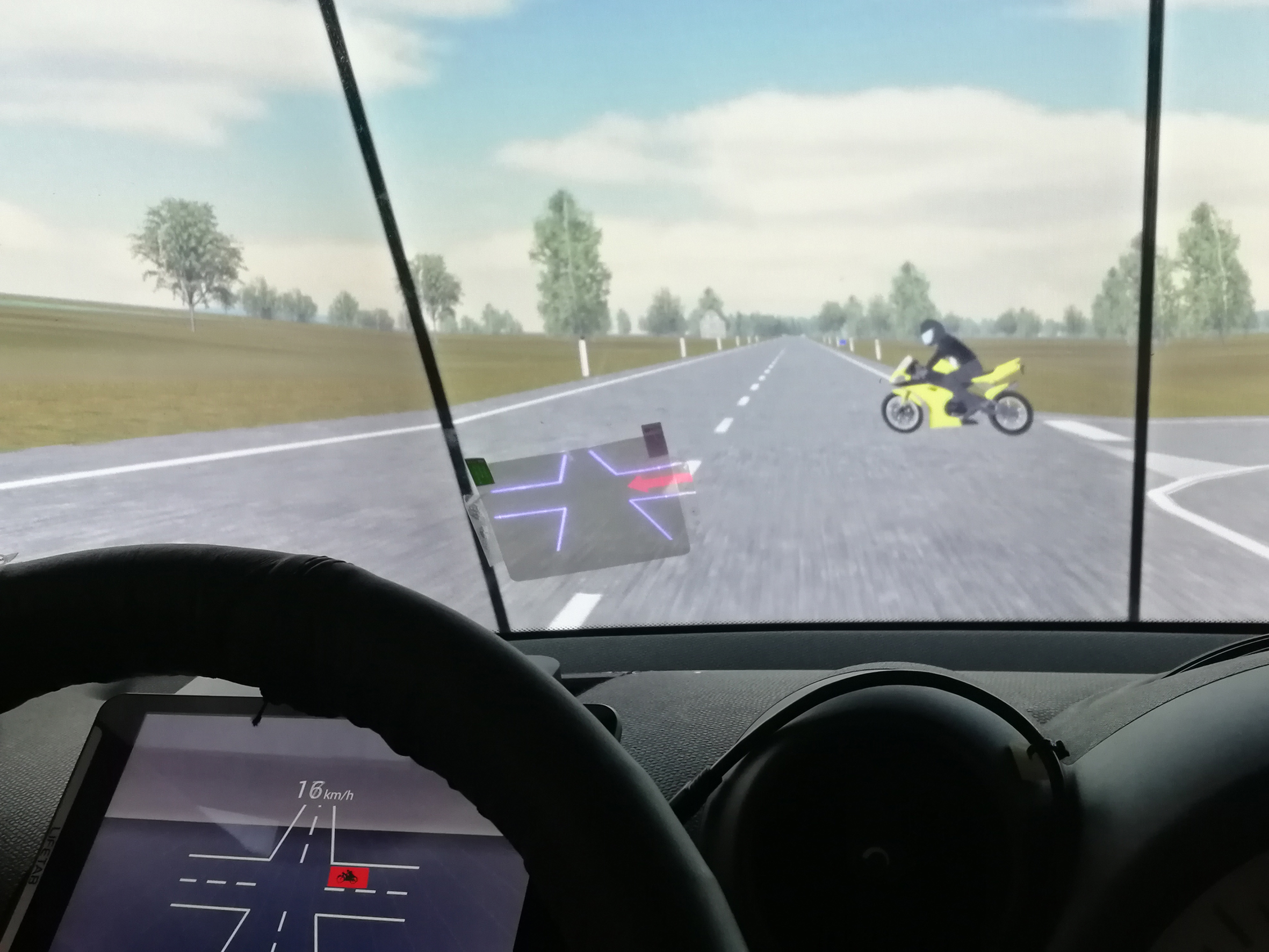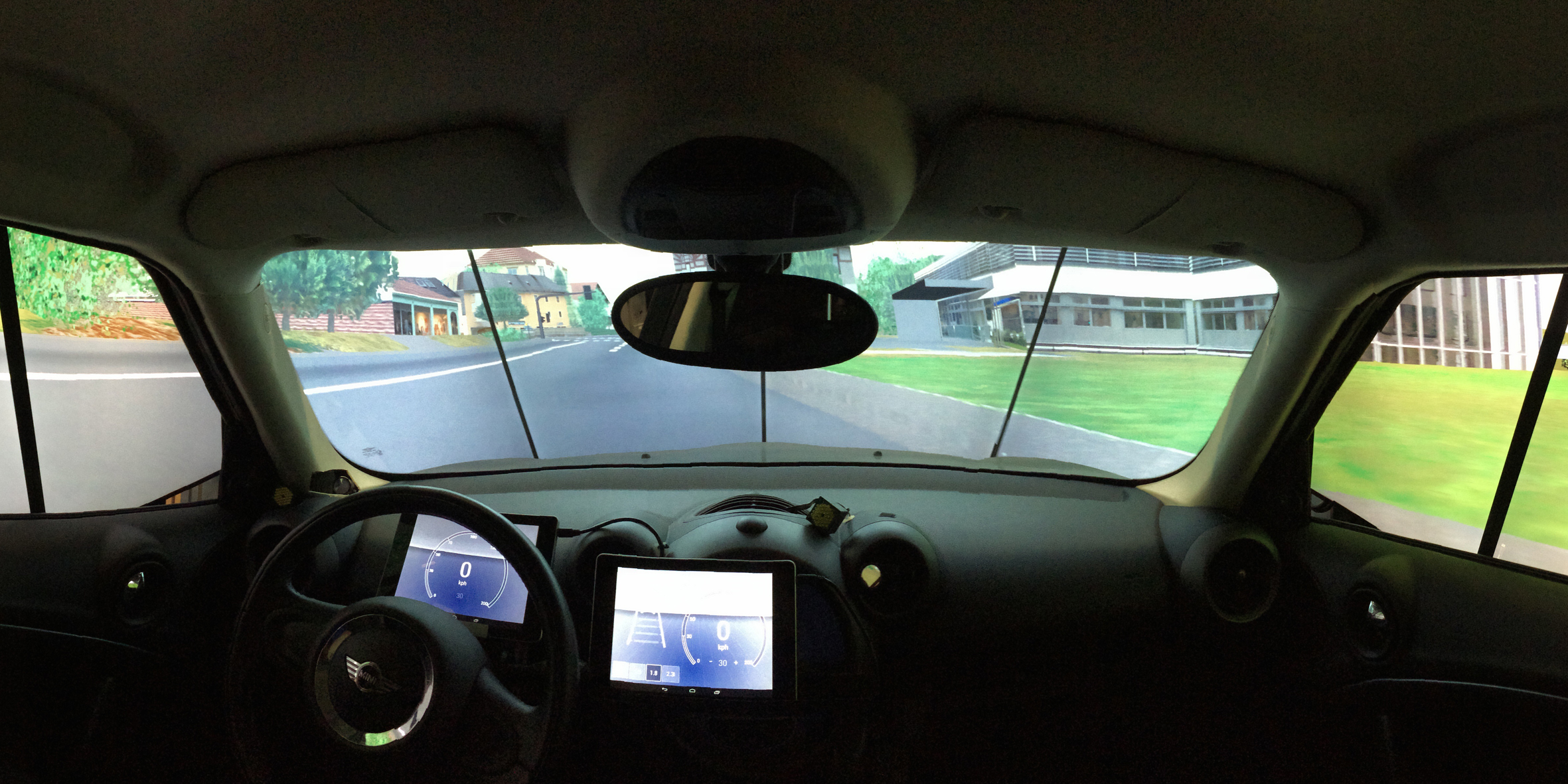TU Graz study shows: Driving-simulator training reduces accidents with motorcycles

Additional pictures for download at the end of the text
There are 4233 accidents involving motorcycles in Austria each year. In more than half the cases other vehicles are involved. The main reason is that motorcycles are overlooked by car drivers. “Optimizations carried out on motorcycles are not constructive in this context,” explains Arno Eichberger, professor at the Institute of Automotive Engineering at TU Graz. For this reason, on behalf of the Federal Ministry for Transport, Innovation and Technology, a consortium of specialists from Reco-Tech GmbH, Fraunhofer Austria and the Institute of Automotive Engineering has developed measures to improve the perceptibility of motorcycles. The study pursued two approaches. On the one hand, budding car drivers should be made aware of such situations in the course of appropriate training courses. On the other hand, researchers wanted to investigate the potential of warning systems in the vehicle.
And now the scientists have presented their results. They call for special driving simulator training courses that prepare novice drivers for commonly occurring scenarios where motorbikes are not easily visible. In addition, they recommend the implementation of a multi-modal motorcycle warning system in cars, based on vehicle-to-vehicle communication. The basis of such a technology already exists.
Two year study with learner drivers
In their investigations, and using driving simulators, researchers reconstructed the most frequent traffic scenarios which lead to collisions between cars and motorbikes on cross-country and urban roads. 80 learners from Styrian driving schools were confronted with various scenarios. In multiple practice drives, they were tested as to whether or how early they recognised the motorbike. A driver assistance system specially designed for the study supported them using acoustic and visual warning signals. This is based on V2V communication (vehicle-to-vehicle) in which the vehicles communicate with each other and inform each other of their respective positions and speeds. “This is already technically feasible today. However, introduction to market has failed so far due to the high costs,” says Eichberger. But he assumes that V2V communication will be fitted out in series vehicles in the next few years.
Significant improvement through driving courses
The study shows that training on a driving simulator can significantly improve noticing motorcycles. The benefits of the driver assistance system with warning signals depends on the situation. It leads to early recognition of motorcyclists on rural roads. But its performance is lower in urban areas. “Drivers habitually rely too much on driver assistance system in inner-city traffic,” interprets Eichberger, who regards the use of driver assistance systems as useful in cases of distraction and inattention. Eichberger can imagine that the method of training will be employed in different ways in the future: “The study underlines the advantages of driving simulators. Driving behaviour can be trained to become risk free in critical situations and driving skills can be improved.”
This research project is anchored in the Field of Expertise “Mobility & production” one of the five strategic research foci at TU Graz.
This was funded by the Austrian Transport Safety Funds of the Federal Ministry for Transport, Innovation and Technology and took place in cooperation with the Austrian Road Safety Board (KFV).
Kontakt
Arno EICHBERGER
Assoc.Prof. Dipl.-Ing. Dr.techn.
Institute of Automotive Engineering | TU Graz
Tel.: +43 316 873 - 35210
E-Mail: arno.eichberger@tugraz.at
www.ftg.tugraz.at






